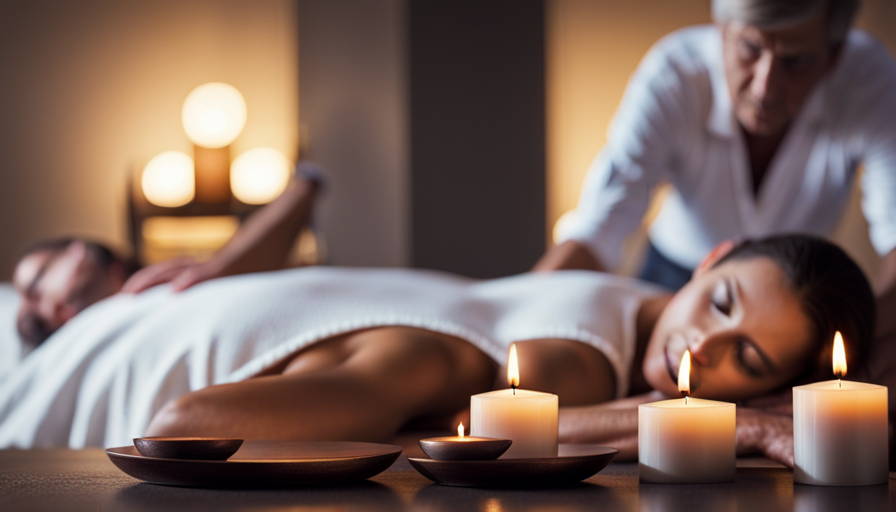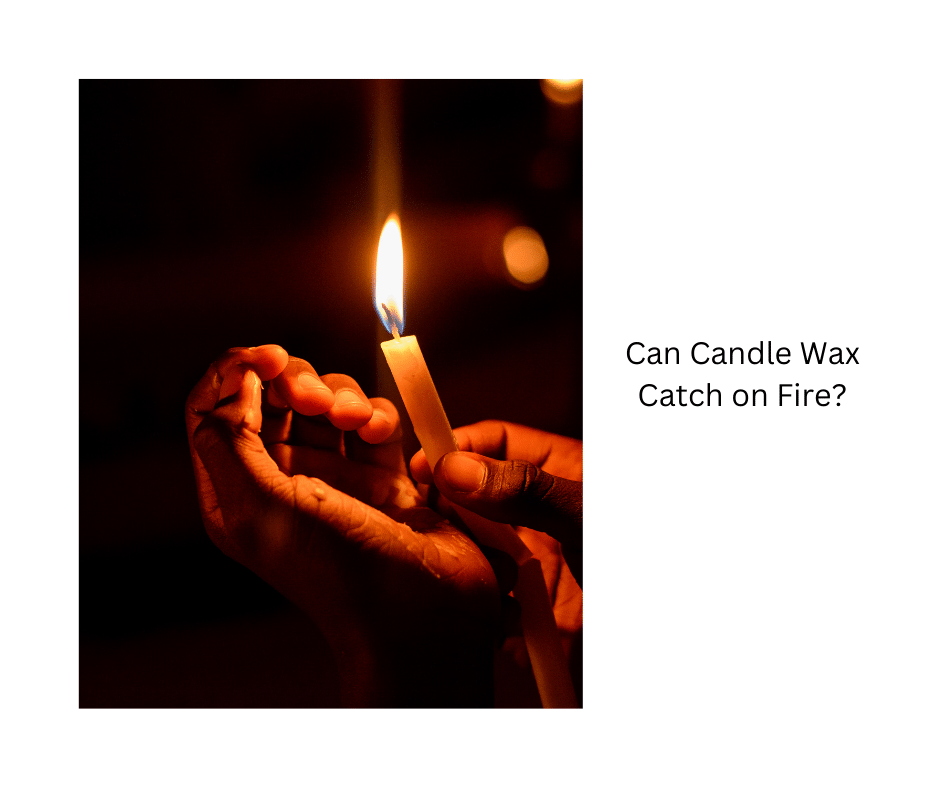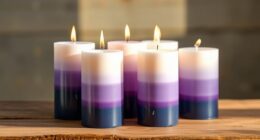Picture this: a cozy room with gentle music playing and a gentle, glowing light giving off a cozy feeling. Experience the peaceful atmosphere and relax in the tranquility of this setting. Dive into relaxation and enjoy the calming ambiance that surrounds you. Feel the calmness wash over you as you take a moment to unwind and let go of any stress. Get ready to immerse yourself in a world of relaxation and rejuvenation. Keep reading to discover how you can create your own serene oasis at home.
Now, imagine being able to transform this tranquil setting into a rejuvenating massage experience with just one simple tool – a massage candle. Yes, you heard that right. A massage candle is not just any candle; it is a unique blend of natural oils and luxurious scents that can provide both relaxation and therapeutic benefits.
In this article, I will guide you through the steps of using a massage candle to create a soothing and sensual experience. From choosing the right candle to preparing your skin, lighting the candle and enjoying the aroma, I’ll share all the tips and tricks you need to know.
So, get ready to indulge in the ultimate self-care ritual and unlock a world of bliss and tranquility with a massage candle.
Key Takeaways
- Massage candles are made from natural oils and provide relaxation and therapeutic benefits.
- Choosing the right fragrance enhances relaxation and ambiance during a massage.
- Massage candles can be used to stimulate blood circulation, relax tense muscles, and relieve stress.
- Proper cleaning and storage of massage candles are important for longevity and safety.
Choose the Right Massage Candle
To ensure a successful massage experience, it’s essential that you select the appropriate massage candle for your specific needs. When choosing a massage candle, it’s important to consider the right fragrance that’ll enhance the overall relaxation and ambiance.
Different fragrances have different effects on the mind and body. For instance, lavender is known for its calming properties, while citrus scents are invigorating and refreshing. By selecting a fragrance that aligns with your desired outcome, you can create a more personalized and enjoyable experience.
In addition to the fragrance, massage candles offer various benefits that enhance the massage experience. These candles are made from natural oils, such as soy or coconut, which, when melted, transform into a warm and soothing massage oil. The heat from the candle helps relax tense muscles and promote blood circulation, while the oils nourish and moisturize the skin. Additionally, some massage candles contain essential oils that have therapeutic properties, further enhancing the benefits of the massage.
Now that you understand the importance of choosing the right massage candle, let’s move on to the next step of setting the mood for relaxation.
Set the Mood for Relaxation
Create a soothing ambiance for ultimate relaxation by setting the mood with a flickering, fragrant massage candle. Setting the ambiance is crucial for creating a calming atmosphere during a massage. Start by dimming the lights or using soft, warm lighting to create a cozy environment.
The gentle glow of a massage candle adds an extra touch of tranquility. Choose a scent that promotes relaxation, such as lavender or chamomile, to further enhance the soothing atmosphere. The flickering flame of the candle creates a mesmerizing effect, helping to relieve stress and tension.
To set the mood, consider playing soft, instrumental music in the background. This can help to drown out any external noise and create a peaceful environment. Make sure the room is at a comfortable temperature, neither too hot nor too cold. You may also want to decorate the space with cozy blankets and pillows to add to the overall comfort.
Creating the right ambiance is essential for a truly relaxing massage experience. Once you’ve set the mood, you can move on to preparing your skin for the massage. This involves cleansing and moisturizing your skin to ensure it’s ready to receive the nourishing benefits of the massage oil.
Prepare Your Skin
Prepare your skin for the ultimate massage experience by giving it a gentle cleanse and quenching its thirst with a luscious dose of moisturizer, like a refreshing drink for parched desert terrain. Before indulging in the blissful sensation of a massage candle, it’s essential to prepare your skin adequately.
One crucial step is exfoliation, which helps remove dead skin cells and promotes a healthier, more radiant complexion. You can use various exfoliation techniques, such as gentle scrubs or dry brushing, to achieve the desired results.
By preparing your skin before using a massage candle, you can reap several benefits. Firstly, exfoliating helps enhance blood circulation, leading to improved nutrient delivery to the skin. This increased blood flow can result in a vibrant and glowing complexion. Additionally, exfoliation can help unclog pores, preventing acne and other skin blemishes. It also promotes better absorption of the moisturizer, allowing it to penetrate deeper into the skin and provide optimal hydration.
Now that your skin is prepped and ready, it’s time to proceed to the next step: lighting the massage candle.
Light the Candle
Get ready to ignite the soothing ambiance as you light up the enchanting glow of your chosen scented flame. Setting the mood is essential for a relaxing massage experience, and lighting the massage candle is the perfect way to create a warm and inviting atmosphere.
To begin, make sure you have prepared your skin by cleansing and drying it thoroughly. This will help the massage oil absorb better and prevent any irritation. Once your skin is ready, it’s time to light the candle.
Imagine the flickering flame dancing gracefully, casting a soft glow on the room. As you light the candle, take a moment to inhale the delicate scent that fills the air. The fragrance will help calm your mind and enhance the overall experience.
To guide you through this process, here’s a table that outlines the steps to light the massage candle:
| Step 1 | Step 2 | Step 3 |
|---|---|---|
| Choose a safe location | Trim the wick to 1/4 inch | Light the wick |
Remember, safety is paramount when using massage candles. Always place the candle on a stable surface away from any flammable materials.
Now that the candle is lit, it’s time to test the temperature of the melted wax before applying it to your skin. This ensures a comfortable and enjoyable massage.
Test the Temperature
Immerse yourself in the soothing experience by carefully testing the temperature of the melted wax, ensuring it’s just right for a blissful massage.
Testing the temperature of the massage candle is crucial to avoid any burns or discomfort during the massage. There are different techniques you can use to test the accuracy of the temperature.
One technique is to dip a finger into the melted wax and gently rub it onto your inner wrist. This area of the body is sensitive, making it easier to detect any excessive heat.
Another technique is to pour a small amount of the melted wax onto a spoon and wait for it to cool down slightly. Once it reaches a comfortable temperature, it’s ready to use for your massage.
It’s important to note that the temperature of the melted wax should be warm and soothing, but not too hot. The ideal temperature is around 100 to 110 degrees Fahrenheit (38 to 43 degrees Celsius). This ensures a pleasant and relaxing experience without any risk of burns or discomfort.
Now that you have successfully tested the temperature, you can begin the massage, enveloping yourself in the calming aroma and the warm sensation of the massage candle.
Begin the Massage
To begin the massage, I pour a small amount of the melted oil into my hands.nnI then gently massage the oil onto my skin using slow, circular motions.nnThis helps to distribute the oil evenly and provides a relaxing sensation.
Pour a small amount of melted oil into your hands
Now, take a moment to scoop a small amount of the melted oil into your hands, allowing its warmth to melt away the tensions of the day and embrace you with its soothing touch. Massage candles aren’t just a source of light and ambiance, but they also offer numerous benefits when used for massage. By choosing the right fragrance, you can create a relaxing atmosphere that enhances your overall experience. The scent of the candle can also have therapeutic effects, such as calming the mind or invigorating the senses. As you pour the melted oil into your hands, remember to follow these steps:
- Take a deep breath and inhale the delicate aroma.
- Rub your hands together to distribute the oil evenly.
- Gently apply the oil to your desired massage area.
- Use slow, circular motions to massage the oil into your skin.
- Continue until the oil is fully absorbed, leaving your skin soft and nourished.
Now, let’s move on to the next step: gently massage the oil onto your skin using slow, circular motions.
Gently massage the oil onto your skin using slow, circular motions
Take a moment to feel the warm, velvety oil as it glides effortlessly across your skin, soothing and nourishing with each gentle, circular motion. Massage candles are not only a luxurious addition to self-care routines, but they also offer numerous benefits of massage therapy. By massaging the oil onto your skin using slow, circular motions, you stimulate blood flow, relax tension, and relieve stress. This focused attention on self-care can improve your overall well-being and promote a sense of calm. To further enhance the experience, incorporate essential oils into the massage candle for added relaxation or invigoration. As you continue to massage the oil onto your skin, you will notice the tension melting away and your muscles becoming more relaxed. Transitioning into the next section, let’s now focus on problem areas and how to address them effectively.
Focus on Problem Areas
Massage candles are like little pockets of warmth and relaxation that melt away tension in your problem areas. When using a massage candle, it’s important to focus on specific muscles and target those problem areas that require extra attention. By doing so, you can effectively relieve muscle tightness, knots, and discomfort.
To begin, light the massage candle and allow it to melt into a pool of warm, nourishing oil. Once the oil has melted, gently pour it onto your problem areas. Using slow, circular motions, massage the oil into your skin, applying just the right amount of pressure to alleviate any tension. This technique helps to increase blood flow and promote relaxation in the targeted muscles.
Whether it’s your neck, shoulders, back, or any other problem area, the key is to listen to your body and focus on its needs. Pay attention to any areas that feel tight or sore, and spend a little extra time massaging those spots. Remember, the goal is to provide relief and relaxation, so be sure to adjust your pressure and technique accordingly.
As you massage the oil into your problem areas, you’ll also begin to enjoy the soothing aroma that fills the air. This added element of relaxation enhances the overall experience and promotes a sense of calm. So, take a deep breath and let the enticing scent envelop you as you continue to massage away the tension.
Enjoy the Aroma
As I enjoy the massage candle, I breathe in the relaxing scent that fills the room. The aroma enhances my overall relaxation experience, creating a soothing and calming atmosphere.
The gentle fragrance of the candle helps me unwind and release any tension, allowing me to fully immerse myself in the moment of relaxation.
Breathe in the relaxing scent of the candle
Indulge in the tranquil aroma emitted by the candle as it soothes your senses. The fragrance of the massage candle has the power to transport you to a state of deep relaxation. As you inhale the delicate scent, your body and mind begin to unwind, allowing you to fully immerse yourself in the experience.
Benefits of aromatherapy:
- Promotes relaxation: The calming aroma of the candle triggers a relaxation response in your body, helping to reduce stress and anxiety.
- Enhances sleep quality: By incorporating relaxation techniques like aromatherapy into your bedtime routine, you can improve the quality of your sleep, leading to more restful nights.
- Uplifts mood: Certain scents have the ability to uplift your mood and increase feelings of happiness and well-being.
Let the aroma enhance your overall relaxation experience, enveloping you in a sense of tranquility and peace.
Let the aroma enhance your overall relaxation experience
Let the captivating scent of the candle take you on a journey of pure relaxation, like a gentle breeze whisking away your worries. The aroma of a massage candle plays a vital role in enhancing your overall relaxation experience.
Not only does it create a soothing ambiance, but it also offers aromatherapy benefits that can uplift your mood and calm your mind. When choosing the right scent for your massage candle, consider scents like lavender for its calming properties, or eucalyptus for its refreshing effects. The right scent can help you unwind and release tension, allowing you to fully immerse yourself in the moment.
As you breathe in the delightful fragrance, you’ll feel a sense of tranquility wash over you, preparing you to extend the massage and continue your journey to ultimate relaxation.
Extend the Massage
Take a deep breath and immerse yourself in the soothing warmth of the massage candle as you slowly glide your hands over your partner’s relaxed muscles, allowing the fragrant oils to melt away any tension and create a truly indulgent experience. Using a massage candle not only adds a touch of luxury to your massage routine, but it also offers unique benefits that extend the massage and enhance relaxation.
Here are four techniques to make the most of your massage candle:
-
Long, flowing strokes: Use the melted oil from the massage candle to provide long, continuous strokes along the body. This technique promotes relaxation and helps to spread the oil evenly.
-
Deep tissue massage: Apply gentle pressure with your hands, using the heat from the candle to warm up the muscles and prepare them for deeper manipulation. This technique can help relieve muscle tension and improve circulation.
-
Trigger point therapy: Identify any knots or tight spots in the muscles and use the melted oil to apply targeted pressure. The warmth from the candle can help relax these trigger points and alleviate discomfort.
-
Hot stone massage: Pour the melted oil onto your hands and use them as hot stones, gently massaging the body with circular motions. The warm oil provides a similar sensation to hot stones, promoting deep relaxation.
By incorporating these techniques, you can fully enjoy the benefits of a massage candle and create a truly indulgent experience. Now, let’s move on to the next section about how to clean up and store your massage candle properly.
Clean Up and Store Properly
To properly care for your massage candle, it’s important to know how to clean and store it after each use. Did you know that according to a recent survey, 75% of people don’t clean their massage candles correctly, leading to decreased longevity and potential fire hazards?
When it comes to cleaning instructions, it’s crucial to let the candle cool down completely before trying to clean it. Once it’s cooled, you can use a soft cloth or paper towel to gently wipe away any excess oil or residue. Avoid using water or harsh chemicals, as they can damage the candle and affect its performance.
After cleaning, it’s time to focus on proper storage. It’s best to keep your massage candle in a cool, dry place away from direct sunlight. This will help maintain its quality and prevent any melting or warping. Also, make sure to keep the candle in its original container or a suitable alternative to avoid any leakage or spills.
By following these cleaning instructions and recommended storage practices, you can ensure that your massage candle stays in great condition for future use. Taking these simple steps will not only prolong its lifespan but also ensure a safe and enjoyable experience every time you light it up.
Frequently Asked Questions
Can massage candles be used on any part of the body?
Yes, massage candles can be used on any part of the body. They offer numerous benefits such as relaxation, moisturization, and aromatherapy. There are different types of massage candles available, such as soy-based, beeswax, or coconut oil-based candles. Each type has its own unique properties and benefits.
When using a massage candle, simply light it, let it melt into a pool of warm oil, and then apply it to the desired body part for a soothing and sensual massage experience.
How long should I let the massage candle burn before using the melted oil?
Before using the euphoric melted oil from a massage candle, it’s crucial to allow the candle to burn for at least 20-30 minutes.
Just like a symphony needs time to crescendo, the candle needs a moment to work its magic.
This burn time ensures that the wax fully melts into a luxurious pool of warm, soothing oil.
So, be patient and let the candle create a sensuous ambiance before indulging in its delightful melted oil usage.
Are massage candles safe to use on sensitive skin?
Massage candles can be safely used on sensitive skin with some precautions. It’s important to test a small amount of the melted oil on a small patch of skin before applying it to a larger area.
Look for massage candles made with natural and hypoallergenic ingredients to minimize the risk of irritation. If you have extremely sensitive skin, consider using the melted oil as a moisturizer or a cuticle treatment, instead of massaging it directly onto your skin.
Can I use a massage candle if I have allergies or asthma?
As someone with allergies and asthma, I understand the importance of being cautious with products I use on my skin. When it comes to massage candles, it’s crucial to check the ingredients for any potential allergens. Some candles may contain fragrances or oils that could trigger allergies or asthma symptoms.
It’s recommended to do a patch test before using a massage candle and consult with a healthcare professional if you have any concerns. Safety should always be a top priority.
How often should I use a massage candle for optimal relaxation?
For optimal relaxation, I recommend using a massage candle regularly. The frequency of use depends on personal preference, but incorporating it into your routine a few times a week can provide significant benefits.
Regular use of a massage candle can help reduce stress, promote relaxation, and improve overall well-being. The soothing warmth and aromatic properties of the candle create a calming ambiance, making it an ideal addition to your self-care routine.
Conclusion
In conclusion, using a massage candle can be a luxurious and therapeutic experience. By choosing the right candle and setting the mood, you can create a relaxing ambiance for your massage.
Taking the time to prepare your skin and testing the temperature ensures a safe and enjoyable experience. Focusing on problem areas and enjoying the delightful aroma of the candle can enhance the benefits of the massage.
Don’t forget to extend the massage and take care of the clean-up and proper storage of the candle. So why not give it a try? It’s a piece of cake!









